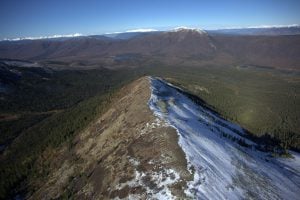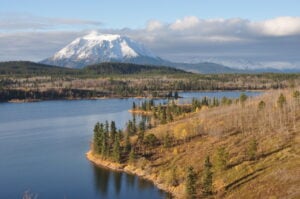David M. Green didn’t intend to spend a quarter of a century studying the hibernation habits of toads.
Green, a biology professor and director of the Redpath Museum at McGill University, initially set out to discover whether the interbreeding of Fowler’s toads with American toads on the north shore of Lake Erie was weather dependent — a study he calls a “spectacular failure.” But, not wanting to let years of data go to waste, Green continued to pursue a casual study of the Fowler’s toad, a little-understood amphibian that spends most of its life underground, only venturing to the surface for a short season to mate and eat its fill of insects.
Green kept track of the toads’ numbers and the timing of their annual emergence, as well as the weather conditions at Long Point, the northernmost extent of the toads’ range in Canada. In so doing, he stumbled upon a predictive model that could help biologists understand the impacts of climate change on hibernating animals and plants.
“After two and a half decades, I had a pretty big data set, so when everyone got serious about climate change, I thought I’d take another look at it and see if I could figure out what it is that brings the animals up out of the ground,” he explains.
Unlike other hibernating species that remain close to the surface and are therefore more sensitive to short-range fluctuations in the weather, Fowler’s toads burrow to a depth of around a meter, where the temperature is more or less constant year-round. Green compared his weather notes to records dating back 140 years and found that the toads appear to respond to the temperature of the soil above them: when the surface thaws in springtime and the warmth penetrates to the toads’ depth, it’s time to head earthside. According to Green’s analysis, published recently in the scientific journal Global Change Biology, this thawing has been occurring earlier and earlier each year, meaning either spring is heating up more quickly, or the ground is not freezing to the extent it did a century ago. As a result, the toads have been emerging sooner — at a rate of about half a day earlier every 10 years.
While that may not sound significant, even small changes in an ecosystem can have far-ranging implications, Green says.
“The toads are just responding to the same cues they always have, but if that’s happening earlier in the year and their winter cues to hibernate are happening later in the year, they have a longer growing season — and everything else is affected by that longer growing season,” he says.
Green has now installed probes in the dunes around Long Point to take more accurate measurements of the temperature deep underground. He believes other biologists could apply his methodology to their particular field of study.
“Plants have roots deep in the ground and lots of botanists are interested in what makes plants bloom and leaf out in the spring, so the same sort of reasoning could be applied,” he says.





